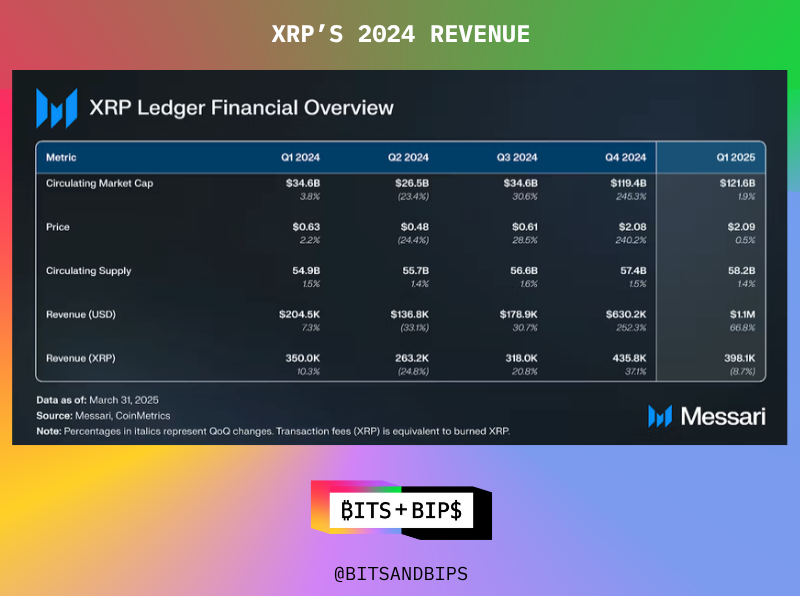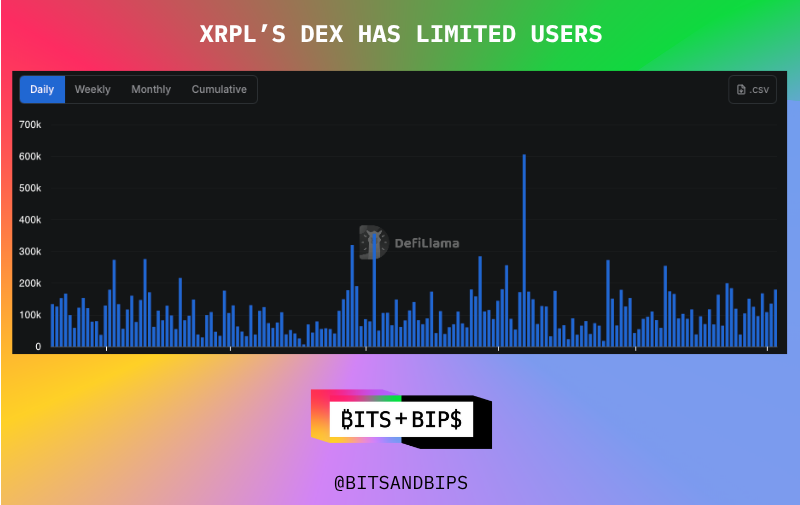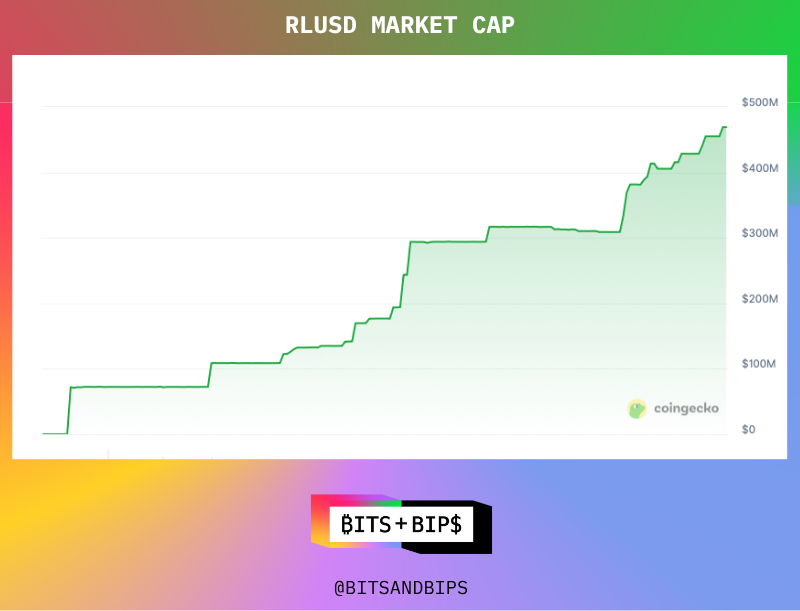The company has finally ended its battle with the U.S. SEC. However, its blockchain still sees limited application, and its stablecoin faces a tough fight.
Author: Steven Ehrlich
Translation: Deep Tide TechFlow
After successfully shaking off the regulatory dispute with the U.S. Securities and Exchange Commission (SEC), Ripple Labs CEO Brad Garlinghouse seems to have been rejuvenated.
On July 2, Ripple announced that it has applied for a federal banking license from the Office of the Comptroller of the Currency (OCC), striving to become the second company to receive this honor after Anchorage Digital. Additionally, its regulated custodian service provider in New York, Standard Custody and Trust Company, is also working to become the first cryptocurrency company to obtain a Federal Reserve Master Account, allowing it to hold reserve deposits supporting its $469 million stablecoin RLUSD directly at the Federal Reserve.
“Staying true to our compliance spirit, @Ripple is applying for a national bank charter from the OCC,” Garlinghouse stated in a tweet on July 2. “If approved, we will be regulated at both the state (through the New York State Department of Financial Services NYDFS) and federal levels, setting a new (and unique) trust benchmark in the stablecoin market.”
Meanwhile, Ripple is continuously improving the infrastructure for RLUSD. The company announced a partnership with Switzerland-based AMINA Bank and is collaborating with London’s OpenPayd to establish a payment network using stablecoins.
And that’s not all; since November 1 of last year, the native token XRP, primarily held by Ripple Labs, has surged by 347%. Furthermore, XRP may see the first U.S. spot exchange-traded fund (ETF) later this year. Nevertheless, XRP's price has remained largely stagnant over the past six months.

Despite the many uncertainties surrounding Ripple Labs, the XRP Ledger (XRPL), and its stablecoin, the biggest suspense still revolves around its original token, XRP.
As Ripple seems to shift its focus more towards the stablecoin market, some believe that if RLUSD truly scales up, it could cannibalize the potential demand Ripple has been trying to create for XRP over the years.
For Ripple, this indeed marks a new starting point, but old issues still persist for this blockchain company. To push XRP's price into the next growth phase, certain key factors may need to change. Here are two main challenges to watch.
Limited Real-World Application of XRP
As early as March 2024, I published an article titled “The Rise of Crypto’s Billion Dollar Zombies” in Forbes, where I decided to focus on the XRP Ledger (XRPL).
In the article, I wrote: “From the perspective of global capital flows, Ripple Labs' current situation is lackluster, with almost no one believing it can disrupt the Belgium-based banking cooperative known as SWIFT, which processes up to $5 trillion in interbank transfers daily. Despite failing to achieve its core goal, Ripple's blockchain—a ledger recording XRP transactions—continues to operate normally. However, it is essentially useless, while the market cap of the XRP token stands at $36 billion, making it the sixth-largest cryptocurrency.”
Such a description is evidently quite harsh, but in the article, I pointed out that despite XRPL's market cap reaching $36 billion at the time, its fee revenue in 2023 was only $583,000. This translates to a staggering price-to-sales ratio (P/S Ratio) of 61,690. More notably, by that time, Ripple had been established for 12 years, not a fledgling startup. In my view, these figures indicate that XRP is more often seen as a “meme coin” rather than an asset with practical utility.
So, what changes have occurred with XRPL since then? In 2024, XRPL's fee revenue grew to $1.15 million, an increase of only $567,000 from the previous year. Meanwhile, its market cap surged from $33.32 billion at the beginning of 2024 to over $80 billion, reaching an astonishing price-to-sales ratio of 103,826.
This set of data once again highlights the core issue facing XRP: despite its rising market cap, its actual application and economic benefits remain limited, making it difficult to support its high market valuation.

According to data from Messari, the activity on XRPL is insufficient to support its price increase. Its flagship decentralized exchange (DEX) typically sees daily trading volumes below $100,000. In contrast, market leader PancakeSwap has daily spot trading volumes exceeding $1 billion, not to mention the rapidly growing derivatives DEX sector, where two major exchanges, Binance and Hyperliquid, handle transaction volumes in the tens of trillions monthly.

In the non-fungible token (NFT) space, XRPL is also significantly lagging. Messari's data shows that in 2024, XRPL had an average of only about 550 NFT traders per day. Even in the current overall downturn of the NFT market, Ethereum still has about 5,000 active traders daily.
Moreover, XRPL has also struggled to introduce native smart contract functionality. As its focus on payments gradually expands, smart contract capabilities have become a “basic configuration” for blockchains. However, as of June 30, Ripple Labs launched an EVM (Ethereum Virtual Machine) compatible sidechain in collaboration with Axelar in an attempt to address this shortcoming. XRP will serve as the gas token and native asset for this new chain, creating potential demand sources beyond payment functionalities.
Nevertheless, Ripple still needs to make significant efforts to create real, non-speculative user demand for XRP through this new direction.
What About RLUSD?
Additionally, XRP holders need to consider how Ripple Labs' stablecoin RLUSD will affect the demand for XRP. After all, XRP was originally designed as a bridge currency to help banks complete currency conversions at lower costs and higher efficiency. However, some argue that the launch of a stablecoin may directly conflict with this goal, especially as the promotion of RLUSD could further entrench the dollar's dominance. This aligns not only with the U.S. intention to maintain dollar hegemony but may also extend to countries and regions with insufficient dollar coverage.

According to CoinGecko data, the stablecoin market is growing at a rocket-like pace. Currently, the total supply of stablecoins has reached $254.79 billion, while the entire industry is still digesting the extremely successful IPO of USD Coin issuer Circle last month. Meanwhile, the U.S. government is gradually approaching the passage of the GENIUS Act, which will become the first cryptocurrency-related law and set rules for the future development of stablecoins. With a flood of funds pouring into this sector and favorable regulatory developments, many are beginning to believe that stablecoins, rather than XRP, represent the future of payments.
Nonetheless, I can still envision a world where both coexist. After all, unless some emerging markets follow El Salvador in adopting the dollar as their official currency, the demand for currency conversion still exists. However, some argue that stablecoins, due to their lower volatility, are more suitable as bridge currencies than XRP.
This perspective on the demand for both tokens is also echoed by Ripple Labs CTO David Schwartz. In an interview surrounding the launch of the RLUSD stablecoin last spring, he stated, “Providing customers with multiple pathways to improve their experience means you can attract more customers. If we only rely on XRP, then in places where XRP is unavailable, we can only say ‘no’ to customers.” However, compared to when Ripple Labs was founded in 2012, the potential market size for XRP may have already shrunk.
In addition to the overall rise of stablecoins, another possible reason for Ripple's launch of RLUSD is the "red mark" shadow cast over XRP due to the U.S. Securities and Exchange Commission (SEC) enforcement actions against Ripple Labs. Owen Lau, an executive director at Oppenheimer & Co, stated in an interview with Forbes in April 2024: “Ripple may feel it has no choice but to issue a stablecoin to persuade banks and other financial institutions to work with it. These institutions may be reluctant to hold or use XRP due to its price volatility and the regulatory risks associated with the SEC lawsuit.”
However, for RLUSD to achieve breakthrough growth and potentially return value to XRP, Ripple must act quickly. It is well known that the stablecoin market is currently dominated by two industry giants: Tether (market cap $158.3 billion) and Circle (market cap $62 billion). Ripple's best strategy may be to promote the use and value of RLUSD through its new sidechain, for example, by incentivizing RLUSD adoption to increase demand for XRP for gas fees. But this remains a hypothesis filled with uncertainties.
Currently, Circle and Tether, along with their tokens, have achieved widespread market distribution and are working hard to expand their ecosystems. Tether not only dominates the trading space but has also announced that its tokens can be used to pay gas fees on a new blockchain called Stable. Circle, on the other hand, has established a high-profile partnership with Coinbase to promote the use of USDC on its Base blockchain and has collaborated with Shopify to enable merchants to accept USDC for payments.
Despite the attention on stablecoins, this is not a "blue ocean market" for RLUSD.
Circle and Tether, along with their stablecoins, have achieved large-scale distribution and are striving to expand their respective ecosystems. Tether dominates the trading space and recently announced that its tokens will be usable for paying gas fees on a new blockchain called Stable. Meanwhile, Circle is promoting the use of USDC on its Base blockchain through its high-profile partnership with Coinbase, while also collaborating with Shopify to allow merchants to accept USDC for payments.
Although the stablecoin market is receiving significant attention, this is certainly not a "blue ocean market" for Ripple's RLUSD.
Ripple's Ace
If Ripple Labs has an ace up its sleeve, it is that it may be one of the most capital-rich cryptocurrency companies in the world. According to its Q1 2025 financial report, the company holds 4.56 million XRP in its wallet, valued at approximately $10.27 billion. Moreover, the company also has 371 million XRP in custodial accounts, worth up to $83.5 billion, which will be gradually unlocked over the next few years.
Although it would be impossible for the company to fully recoup such a large amount of funds if it attempted to sell all XRP at once, Ripple is virtually unlikely to face the risk of running out of funds.
For XRP holders, this means that Ripple has unlimited resources to drive demand for its newly launched EVM sidechain, while also being able to support the expansion of partnerships and use cases for RLUSD or XRP.
However, all of this may not matter much to XRP holders. After all, despite the limited user growth of the XRPL ledger in recent years, XRP's price has still "soared against the trend," remaining largely unaffected.
免责声明:本文章仅代表作者个人观点,不代表本平台的立场和观点。本文章仅供信息分享,不构成对任何人的任何投资建议。用户与作者之间的任何争议,与本平台无关。如网页中刊载的文章或图片涉及侵权,请提供相关的权利证明和身份证明发送邮件到support@aicoin.com,本平台相关工作人员将会进行核查。




